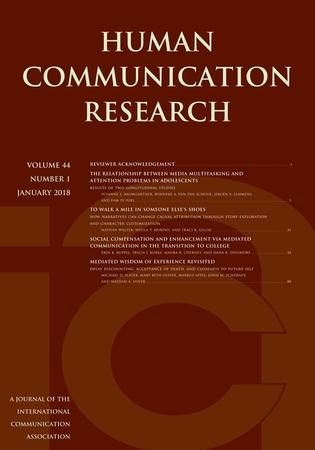关于影响力的性质:确定七个国家的超级扩散者并描述其特征
IF 3.3
1区 文学
Q1 COMMUNICATION
引用次数: 0
摘要
社会影响力理论和应用工作的一个重要组成部分就是识别有影响力的人。Boster 等人关于超级扩散者的理论框架提供了一种方法,但关于影响力本质的重要问题依然存在。特别是,由于现有的研究主要以美国大学生为样本,因此目前仍不清楚:(a) 该框架是否能充分描述不同人群中超级影响力者的特征;(b) 我们目前对超级影响力者的理解是否适用于美国以外的地区。为了解决这些问题,我们利用在线调查研究了美国、英国、新加坡、南非、印度、巴基斯坦和澳大利亚(总人数 = 3,476)的超级扩散者特征的因子效度、度量不变性和相关性。结果表明,超级扩散者框架可以有效地用于描述和识别不同背景下有影响力的个体。影响力似乎也是一种相对特质化的个体差异,而不是与特定国家或文化的独特契合度。本文章由计算机程序翻译,如有差异,请以英文原文为准。
On the nature of influence: identifying and characterizing superdiffusers in seven countries
An important component of theoretical and applied work on social influence is identifying influential people. Boster et al.’s theoretical framework on superdiffusers provides one method of doing so, but important questions on the nature of influence remain. In particular, because existing studies have primarily sampled U.S. college students, it remains unclear whether (a) the framework adequately characterizes superdiffusers in different populations and (b) our current understanding of superdiffusers applies outside of the United States. To address these questions, we used an online survey to examine factorial validity, metric invariance, and correlates of superdiffuser characteristics in the United States, the United Kingdom, Singapore, South Africa, India, Pakistan, and Australia (total N = 3,476). Results suggest the superdiffuser framework can fruitfully be used to describe and identify influential individuals in diverse contexts. Influence also appears to be a relatively trait-like individual difference rather than a matter of unique fit to a particular country or culture.
求助全文
通过发布文献求助,成功后即可免费获取论文全文。
去求助
来源期刊

Human Communication Research
COMMUNICATION-
CiteScore
8.20
自引率
2.00%
发文量
28
期刊介绍:
Human Communication Research is one of the official journals of the prestigious International Communication Association and concentrates on presenting the best empirical work in the area of human communication. It is a top-ranked communication studies journal and one of the top ten journals in the field of human communication. Major topic areas for the journal include language and social interaction, nonverbal communication, interpersonal communication, organizational communication and new technologies, mass communication, health communication, intercultural communication, and developmental issues in communication.
 求助内容:
求助内容: 应助结果提醒方式:
应助结果提醒方式:


